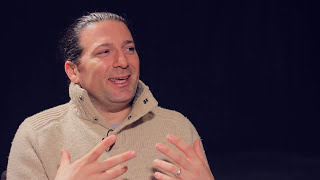In Chapter 5 of 15 of her 2010 Capture Your Flag interview, non-profit executive and Students of the World founder Courtney Spence answers "What do you do and why do you do it?" She shares her organizational purpose to empower college students to travel abroad and tell the story of NGO work fighting problems on the frontlines. These locations range from New Orleans to India to Cambodia to other challenged areas. Students receive both impactful travel experiences gathering community stories on-location as well as post-production experience in Austin, Texas where projects are completed and, over time, distributed.
Transcript:
Erik Michielsen: What do you do and why do you do it?
Courtney Spence: So I created students of the world back as a sophomore at Duke University with a purpose to tell stories of progress. What we do is we take university students, we partner them with some of the most innovative organizations working all over the world, our students spend about four weeks on location where they immerse themselves in a community, form relationships, form friendships and really purpose to tell the stories of those that are the front lines fighting some of the worlds most pressing problems and whether that be in Cambodia, India or New Orleans. We are a chapter based nonprofit so we have chapters at various universities across the nation, one of our chapters is here in Austin, the University of Texas, and when the students return from their four weeks of production we bring them back to Austin for a six week sort of mega post production creative brainstorm where we all work on various multi media projects so it’s short films, it’s photo essays, it’s audio documentaries, audio documentaries over photo essays so it’s really sort of up to the individual student to figure out how they want to best tell the story of that organization, that individual.
Erik Michielsen: How do you define success in what you do?
Courtney Spence: There’s a few things that we look back every year, first and foremost the student experience, did our students, you know, were they safe? Did they enjoy themselves? Do they feel like they really had a purpose in doing what they did and do they feel that they were successful in helping craft these stories from these organizations and these individuals on the ground? How many people heard these stories? What sort of impact did that have? For example, we had our team from the University of Texas in Northern Thailand working with a woman who basically had taken in children that were being trafficked, children from off the streets, it was a really impactful experience for the students, they showed it to a single individual person here in Austin and the next thing we knew, a five thousand dollar check was being written to go directly to this woman to build a new house for the children she was caring for. So seeing those small moments where people are moved by the media, moved by the story and want to get involved, that is certainly successful for us.























